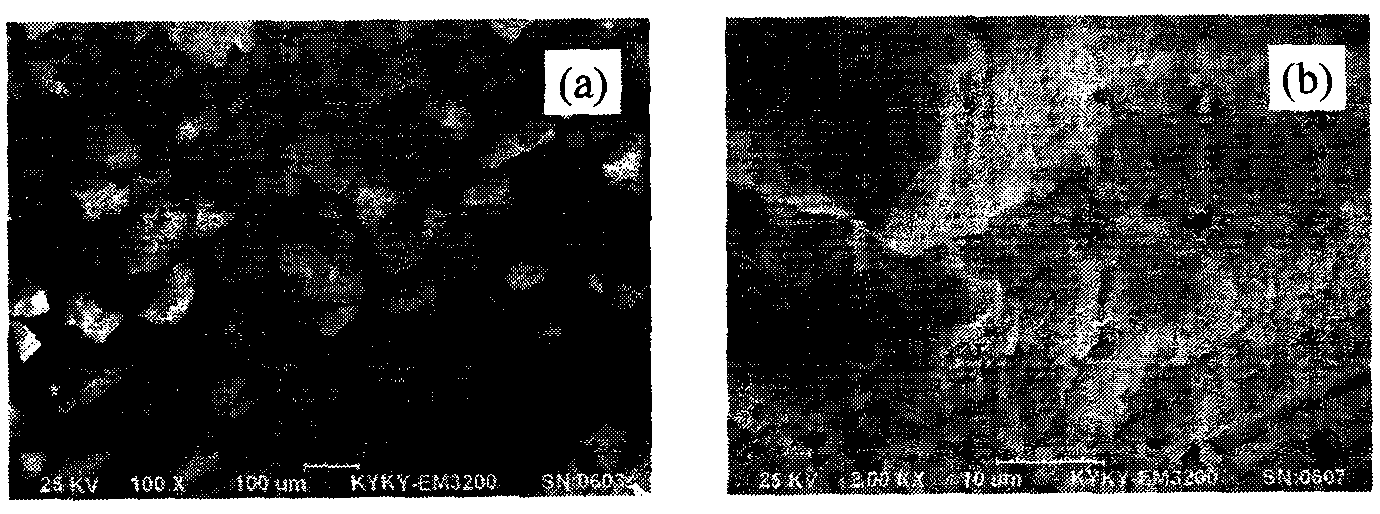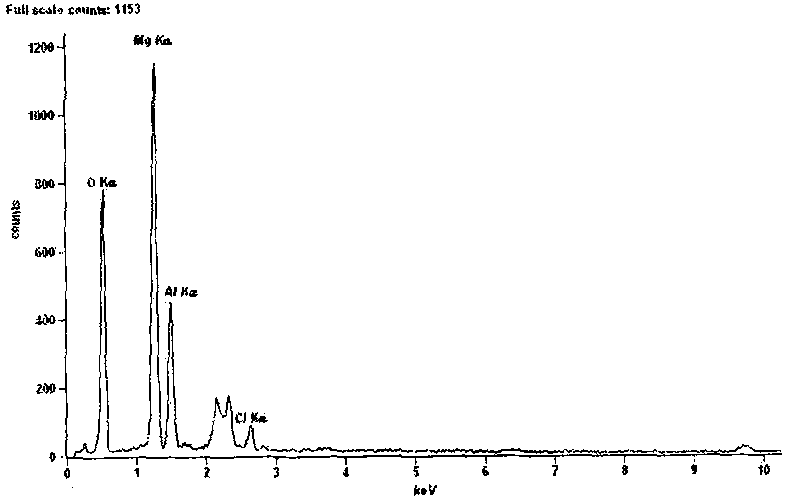Technology for highly-efficiently enriching pathogenic bacteria in water environments
A technology for pathogenic bacteria and water environment, applied in the fields of filtration and separation, separation of microorganisms, chemical instruments and methods, etc., can solve the problems of low content of pathogenic microorganisms and low detection sensitivity, and achieves simple operation, large amount of water samples, high efficiency high effect
- Summary
- Abstract
- Description
- Claims
- Application Information
AI Technical Summary
Problems solved by technology
Method used
Image
Examples
Embodiment 1
[0042] To make a positively charged filter material, the main steps are as follows:
[0043] ① Preparation of Magnesium Aluminum Hydroxide Colloid
[0044] a. Weigh 192 grams of AlCl respectively 3 ·6H 2 O and 488 g MgCl 2 ·6H 2 O was dissolved in 8L deionized water, and under stirring at 300 rpm, slowly and uniformly added about 2.4L of 3mol / L NaOH solution until no precipitation occurred. Adjust the pH to about 8.0 with hydrochloric acid, continue to stir for 2 hours, and then carry out static aging.
[0045] b. During the static aging process, pour out the supernatant the next day, make up the volume with deionized water, and stir evenly. A total of 3 water changes were performed, lasting about 5 days.
[0046] ② Preparation of filter material
[0047] a. Centrifuge the aged magnesium aluminum hydroxide colloid with a centrifugation parameter of 6000rpm×10min. Pour off the supernatant and keep the magnesium aluminum hydroxide precipitate.
[0048] b. Put the magnes...
Embodiment 2
[0053] The main implementation steps for making the filter device and building the filter system are as follows:
[0054] ①Filter production
[0055] a. Take a plexiglass tube with a diameter of 6cm and a length of 20cm, and insert one end of it into a hard plastic tube with a diameter of 0.5cm and a length of about 2cm as the outlet pipe. About 1cm away from the water outlet, fix a 200-mesh stainless steel mesh with the same inner diameter as the plexiglass tube to carry the filter material and filter the water. The other end of the plexiglass tube is machined with a section of thread, and a plastic nut with the same diameter is provided. A small hole is opened in the middle of the nut and a hard plastic water inlet pipe with a diameter of 0.5 cm and a length of 2 cm is installed.
[0056] b. Open the nut and load the magnesium aluminum hydroxide filter material with a height of about 15cm, and then re-tighten the nut.
[0057] ②Establishment of filtration system
[0058] P...
Embodiment 3
[0060] To prepare the eluent, the main steps are as follows:
[0061] a.3.723gNa 2 HPO 4 and 9.238 g NaH 2 PO 4 Completely dissolve in 1L deionized water to make a buffer solution with a pH value of about 6.5.
[0062] b. Add 5mL of analytically pure tween-80 to 1L of the above buffer solution, and stir well.
[0063] c. Dispense the prepared eluent into test tubes with 10 mL each, and autoclave at 121°C for 20 minutes.
PUM
| Property | Measurement | Unit |
|---|---|---|
| diameter | aaaaa | aaaaa |
| length | aaaaa | aaaaa |
| length | aaaaa | aaaaa |
Abstract
Description
Claims
Application Information
 Login to View More
Login to View More - R&D
- Intellectual Property
- Life Sciences
- Materials
- Tech Scout
- Unparalleled Data Quality
- Higher Quality Content
- 60% Fewer Hallucinations
Browse by: Latest US Patents, China's latest patents, Technical Efficacy Thesaurus, Application Domain, Technology Topic, Popular Technical Reports.
© 2025 PatSnap. All rights reserved.Legal|Privacy policy|Modern Slavery Act Transparency Statement|Sitemap|About US| Contact US: help@patsnap.com



